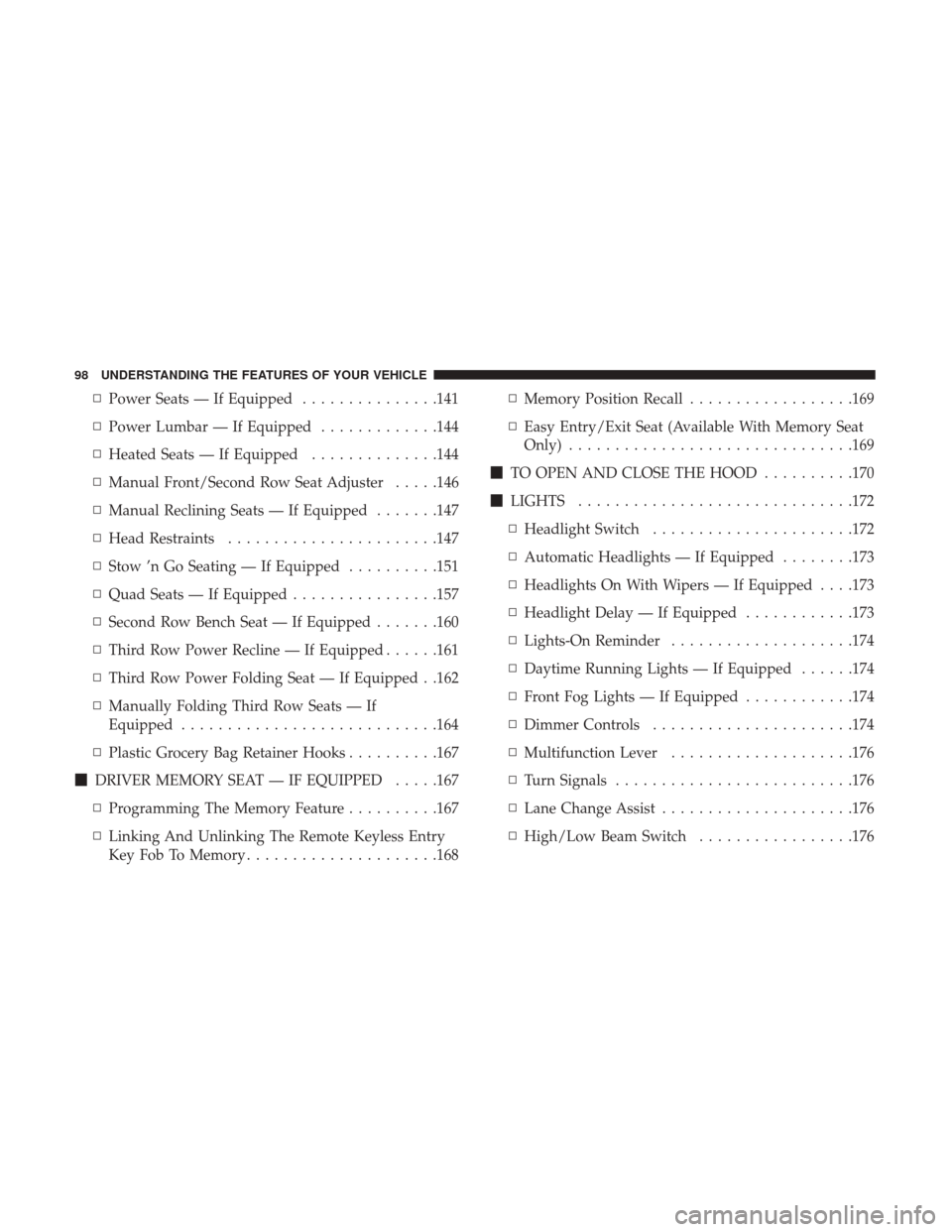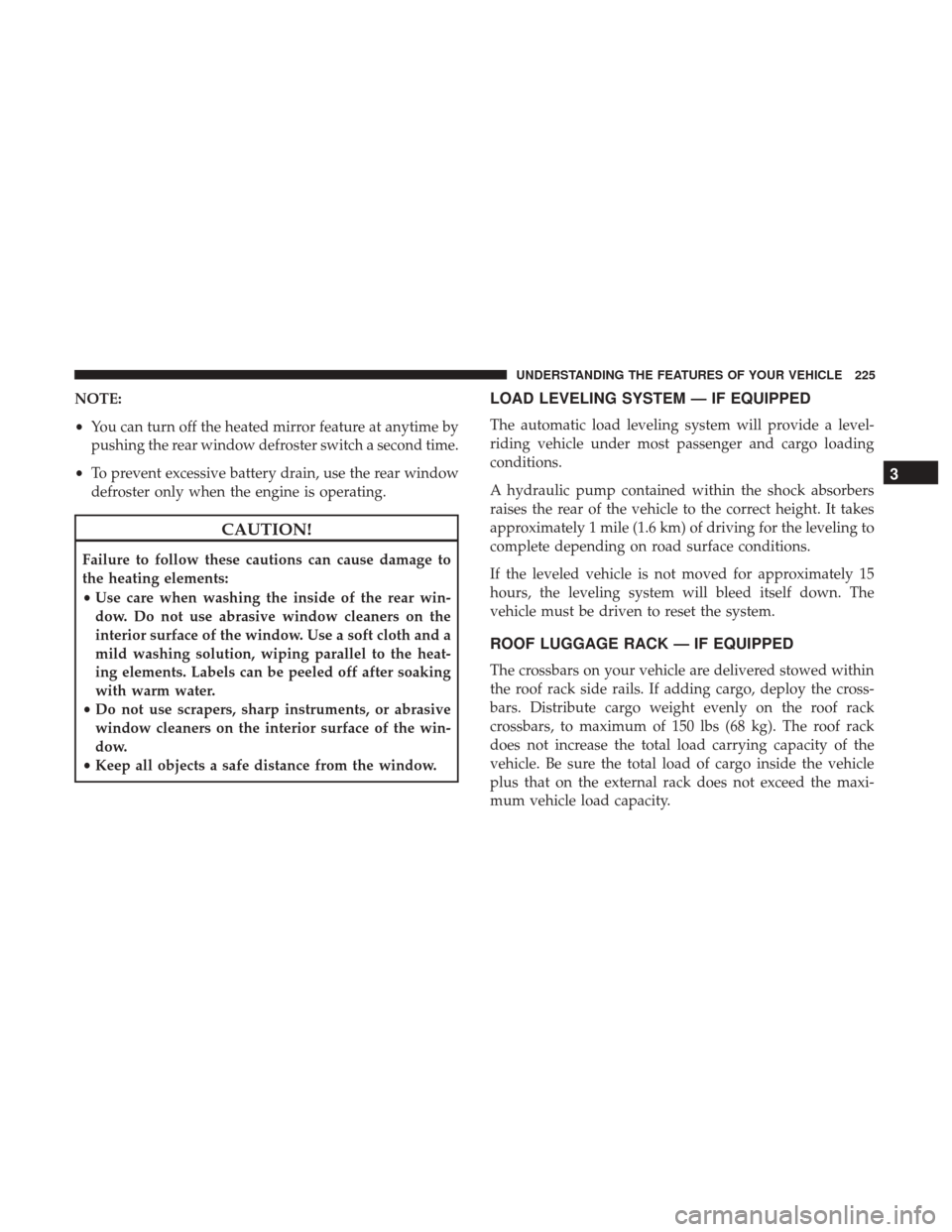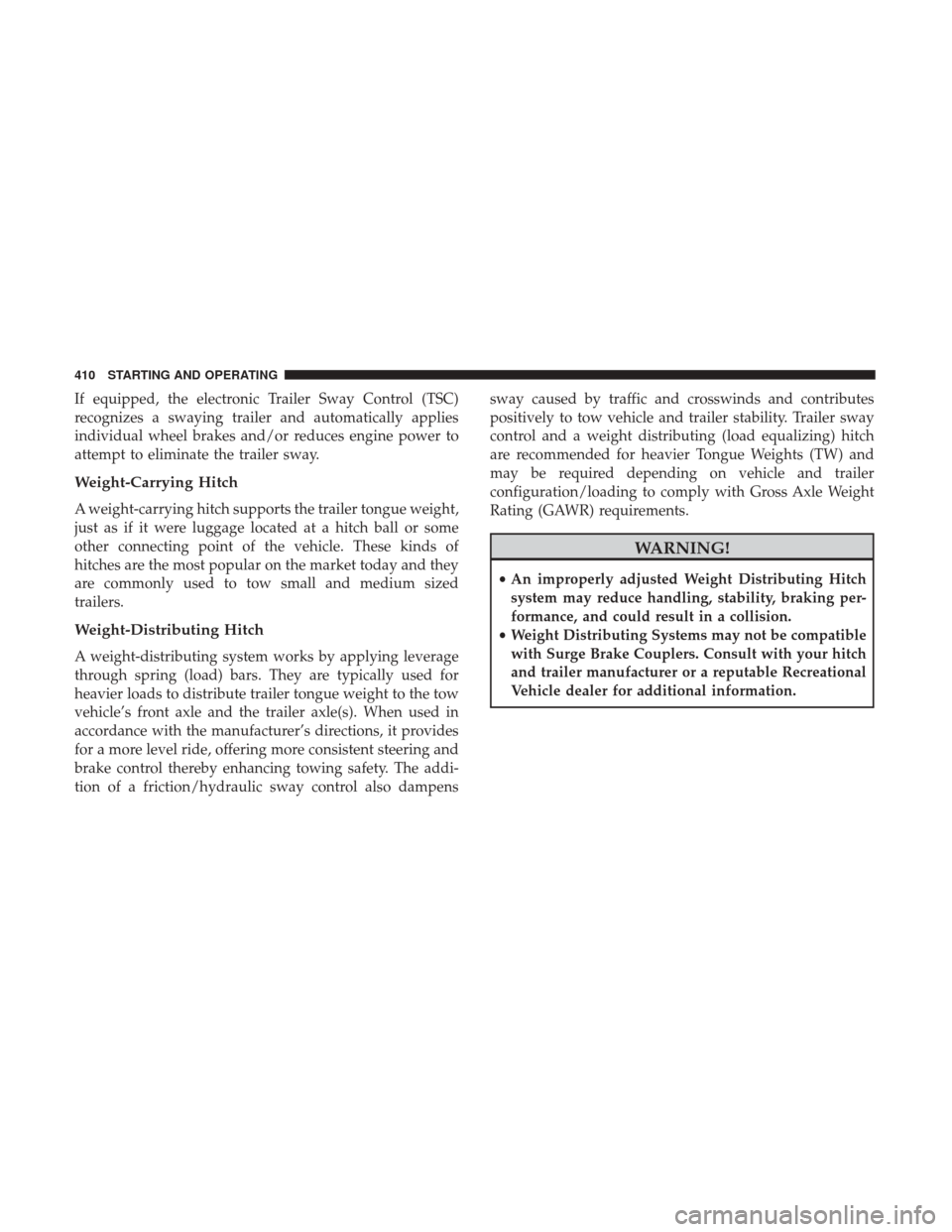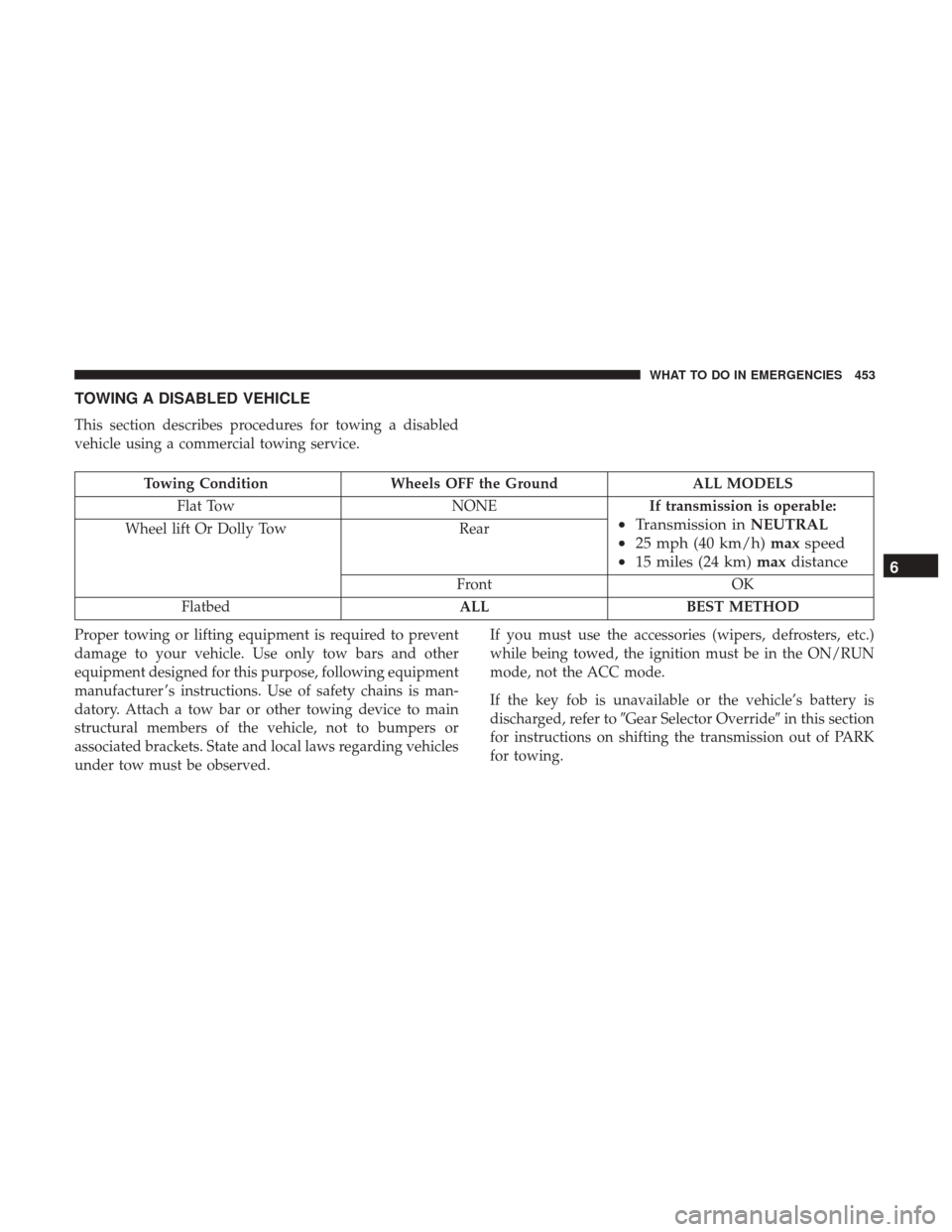Page 100 of 530

▫Power Seats — If Equipped ...............141
▫ Power Lumbar — If Equipped .............144
▫ Heated Seats — If Equipped ..............144
▫ Manual Front/Second Row Seat Adjuster .....146
▫ Manual Reclining Seats — If Equipped .......147
▫ Head Restraints .......................147
▫ Stow ’n Go Seating — If Equipped ..........151
▫ Quad Seats — If Equipped ................157
▫ Second Row Bench Seat — If Equipped .......160
▫ Third Row Power Recline — If Equipped ......161
▫ Third Row Power Folding Seat — If Equipped . .162
▫ Manually Folding Third Row Seats — If
Equipped ............................164
▫ Plastic Grocery Bag Retainer Hooks ..........167
� DRIVER MEMORY SEAT — IF EQUIPPED .....167
▫ Programming The Memory Feature ..........167
▫ Linking And Unlinking The Remote Keyless Entry
Key Fob To Memory .....................168 ▫
Memory Position Recall ..................169
▫ Easy Entry/Exit Seat (Available With Memory Seat
Only) ...............................169
� TO OPEN AND CLOSE THE HOOD ..........170
� LIGHTS ............................. .172
▫ Headlight Switch ..................... .172
▫ Automatic Headlights — If Equipped ........173
▫ Headlights On With Wipers — If Equipped . . . .173
▫ Headlight Delay — If Equipped ............173
▫ Lights-On Reminder ....................174
▫ Daytime Running Lights — If Equipped ......174
▫ Front
Fog Lights — If Equipped ............174
▫ Dimmer Controls ..................... .174
▫ Multifunction Lever ....................176
▫ Turn Signals ..........................176
▫ Lane Change Assist .....................176
▫ High/Low Beam Switch .................176
98 UNDERSTANDING THE FEATURES OF YOUR VEHICLE
Page 227 of 530

NOTE:
•You can turn off the heated mirror feature at anytime by
pushing the rear window defroster switch a second time.
• To prevent excessive battery drain, use the rear window
defroster only when the engine is operating.
CAUTION!
Failure to follow these cautions can cause damage to
the heating elements:
•Use care when washing the inside of the rear win-
dow. Do not use abrasive window cleaners on the
interior surface of the window. Use a soft cloth and a
mild washing solution, wiping parallel to the heat-
ing elements. Labels can be peeled off after soaking
with warm water.
• Do not use scrapers, sharp instruments, or abrasive
window cleaners on the interior surface of the win-
dow.
• Keep all objects a safe distance from the window.
LOAD LEVELING SYSTEM — IF EQUIPPED
The automatic load leveling system will provide a level-
riding vehicle under most passenger and cargo loading
conditions.
A hydraulic pump contained within the shock absorbers
raises the rear of the vehicle to the correct height. It takes
approximately 1 mile (1.6 km) of driving for the leveling to
complete depending on road surface conditions.
If the leveled vehicle is not moved for approximately 15
hours, the leveling system will bleed itself down. The
vehicle must be driven to reset the system.
ROOF LUGGAGE RACK — IF EQUIPPED
The crossbars on your vehicle are delivered stowed within
the roof rack side rails. If adding cargo, deploy the cross-
bars. Distribute cargo weight evenly on the roof rack
crossbars, to maximum of 150 lbs (68 kg). The roof rack
does not increase the total load carrying capacity of the
vehicle. Be sure the total load of cargo inside the vehicle
plus that on the external rack does not exceed the maxi-
mum vehicle load capacity.
3
UNDERSTANDING THE FEATURES OF YOUR VEHICLE 225
Page 228 of 530
The crossbars and side rails are designed to carry weight
on vehicles equipped with a luggage rack. The load must
not exceed 150 lbs (68 kg), and should be uniformly
distributed over the luggage rack crossbars.
NOTE:
•Crossbars are error-proofed and cannot be deployed or
stowed in the incorrect positions.
• To help control wind noise, stow the crossbars in the side
rails when they are not in use.
Deploying The Crossbars
To deploy the crossbars, completely loosen the thumb
screws at both ends of the crossbar and lift the crossbar
from its stowed position in the side rail. Repeat with
crossbar on the opposite side.
CAUTION!
Use care when removing and handling the crossbars to
prevent damage to the vehicle.
Crossbar Stowed In Side Rail
Loosening Crossbars
226 UNDERSTANDING THE FEATURES OF YOUR VEHICLE
Page 229 of 530
Bend the crossbar supports at each end, taking care to keep
hand clear of pivoting joint. Slide the thumb screw down.
Stowed Position
Deployed Position
3
UNDERSTANDING THE FEATURES OF YOUR VEHICLE 227
Page 231 of 530
Once the crossbars are set into position, tighten the thumb
screws completely.
Stowing The Crossbars
Reverse the procedure to stow the crossbars, again, taking
care to keep hand clear of pivoting joint. Crossbars are
identical and can be stowed in either rail nest. Once the
crossbars are stowed, tighten the thumb screws completely.NOTE:
Load should always be secured to crossbars first,
with rail tie down loops used as additional securing points
if needed. Tie loops are intended as supplementary tie
down points only. Do not use ratcheting mechanisms with
the tie loops.
Tightening Crossbar
Rail Tie Loops
3
UNDERSTANDING THE FEATURES OF YOUR VEHICLE 229
Page 412 of 530

If equipped, the electronic Trailer Sway Control (TSC)
recognizes a swaying trailer and automatically applies
individual wheel brakes and/or reduces engine power to
attempt to eliminate the trailer sway.
Weight-Carrying Hitch
A weight-carrying hitch supports the trailer tongue weight,
just as if it were luggage located at a hitch ball or some
other connecting point of the vehicle. These kinds of
hitches are the most popular on the market today and they
are commonly used to tow small and medium sized
trailers.
Weight-Distributing Hitch
A weight-distributing system works by applying leverage
through spring (load) bars. They are typically used for
heavier loads to distribute trailer tongue weight to the tow
vehicle’s front axle and the trailer axle(s). When used in
accordance with the manufacturer’s directions, it provides
for a more level ride, offering more consistent steering and
brake control thereby enhancing towing safety. The addi-
tion of a friction/hydraulic sway control also dampenssway caused by traffic and crosswinds and contributes
positively to tow vehicle and trailer stability. Trailer sway
control and a weight distributing (load equalizing) hitch
are recommended for heavier Tongue Weights (TW) and
may be required depending on vehicle and trailer
configuration/loading to comply with Gross Axle Weight
Rating (GAWR) requirements.
WARNING!
•
An improperly adjusted Weight Distributing Hitch
system may reduce handling, stability, braking per-
formance, and could result in a collision.
• Weight Distributing Systems may not be compatible
with Surge Brake Couplers. Consult with your hitch
and trailer manufacturer or a reputable Recreational
Vehicle dealer for additional information.
410 STARTING AND OPERATING
Page 455 of 530

TOWING A DISABLED VEHICLE
This section describes procedures for towing a disabled
vehicle using a commercial towing service.
Towing ConditionWheels OFF the Ground ALL MODELS
Flat Tow NONEIf transmission is operable:
•Transmission in NEUTRAL
• 25 mph (40 km/h) maxspeed
• 15 miles (24 km) maxdistanceWheel lift Or Dolly Tow Rear
Front OK
Flatbed ALLBEST METHOD
Proper towing or lifting equipment is required to prevent
damage to your vehicle. Use only tow bars and other
equipment designed for this purpose, following equipment
manufacturer ’s instructions. Use of safety chains is man-
datory. Attach a tow bar or other towing device to main
structural members of the vehicle, not to bumpers or
associated brackets. State and local laws regarding vehicles
under tow must be observed. If you must use the accessories (wipers, defrosters, etc.)
while being towed, the ignition must be in the ON/RUN
mode, not the ACC mode.
If the key fob is unavailable or the vehicle’s battery is
discharged, refer to
�Gear Selector Override� in this section
for instructions on shifting the transmission out of PARK
for towing.
6
WHAT TO DO IN EMERGENCIES 453